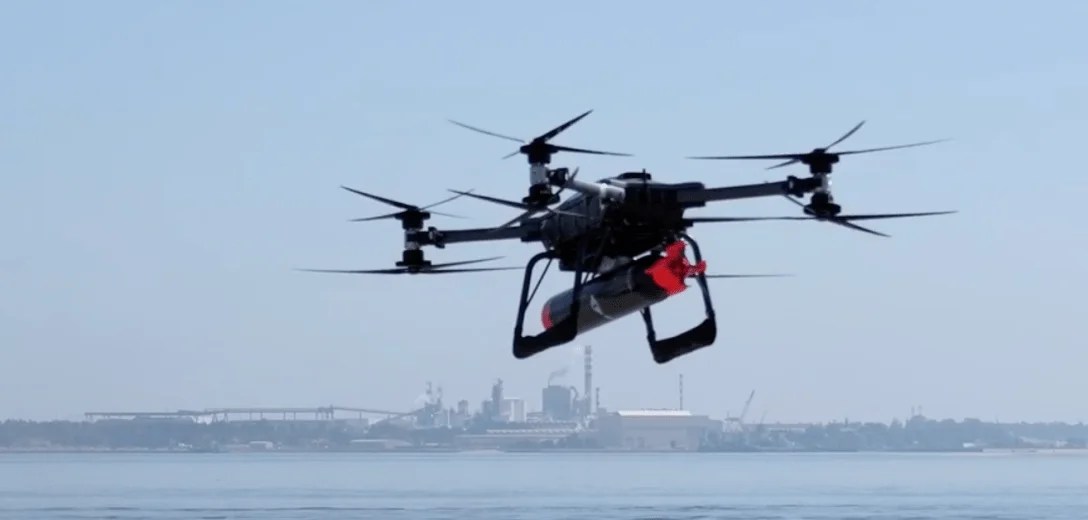New autonomous underwater demonstrator to be launched next year
BAE Systems has announced a collaboration with Cellula Robotics to showcase the capabilities of its new Extra Large Autonomous Underwater Vehicle (XLAUV), known as Herne, on a technology demonstrator in the water in the second half of 2024.
Recent acts of sub-sea aggression highlight the strategic importance of the underwater domain, the need to protect the critical national infrastructure within it and the inherent challenges. Autonomous platforms, like Herne, could have a role in helping militaries overcome the challenge that the vast expanses of the underwater battlespace present, enabling them to monitor much larger areas without the limitations of a human crew and in a far more cost-effective way.
Herne will provide a capability built on BAE Systems’ deep understanding of its military customers to deliver the persistence and flexibility needed for the future. Its adaptable design will allow the platform to be configured to conduct operations including: anti-submarine warfare; intelligence, surveillance and reconnaissance; and electronic warfare.
The demonstrator project, will test the ‘brains’ of the BAE Systems military XLAUV on one of Cellula Robotics’ underwater vehicles in trials set to take place next year at a facility on the south coast of England.
"This will be the first time any UK company will have tested its advanced autonomous capabilities in this area and I am excited to be working with Cellula Robotics. My aim is to create a capability that is faster, more capable, more flexible, cheaper for customers to buy and provides navies with a way to protect critical national infrastructure." Scott Jamieson, Managing Director of Maritime Services at BAE Systems
"As we embark on this ground-breaking partnership with BAE Systems, we recognize the critical role autonomous platforms play in addressing the evolving challenges of the underwater domain. Recent sub-sea aggression incidents underscore the importance of safeguarding our underwater critical infrastructure. We are thrilled to collaborate with BAE Systems and look forward to the demonstration, setting the course for a future of enhanced underwater security and intelligence." Eric Jackson, President at Cellula Robotics Ltd
BAE Systems has announced a collaboration with Cellula Robotics to showcase the capabilities of its new Extra Large Autonomous Underwater Vehicle (XLAUV), known as Herne, on a technology demonstrator in the water in the second half of 2024.
Recent acts of sub-sea aggression highlight the strategic importance of the underwater domain, the need to protect the critical national infrastructure within it and the inherent challenges. Autonomous platforms, like Herne, could have a role in helping militaries overcome the challenge that the vast expanses of the underwater battlespace present, enabling them to monitor much larger areas without the limitations of a human crew and in a far more cost-effective way.
Herne will provide a capability built on BAE Systems’ deep understanding of its military customers to deliver the persistence and flexibility needed for the future. Its adaptable design will allow the platform to be configured to conduct operations including: anti-submarine warfare; intelligence, surveillance and reconnaissance; and electronic warfare.
The demonstrator project, will test the ‘brains’ of the BAE Systems military XLAUV on one of Cellula Robotics’ underwater vehicles in trials set to take place next year at a facility on the south coast of England.
"This will be the first time any UK company will have tested its advanced autonomous capabilities in this area and I am excited to be working with Cellula Robotics. My aim is to create a capability that is faster, more capable, more flexible, cheaper for customers to buy and provides navies with a way to protect critical national infrastructure." Scott Jamieson, Managing Director of Maritime Services at BAE Systems
"As we embark on this ground-breaking partnership with BAE Systems, we recognize the critical role autonomous platforms play in addressing the evolving challenges of the underwater domain. Recent sub-sea aggression incidents underscore the importance of safeguarding our underwater critical infrastructure. We are thrilled to collaborate with BAE Systems and look forward to the demonstration, setting the course for a future of enhanced underwater security and intelligence." Eric Jackson, President at Cellula Robotics Ltd








